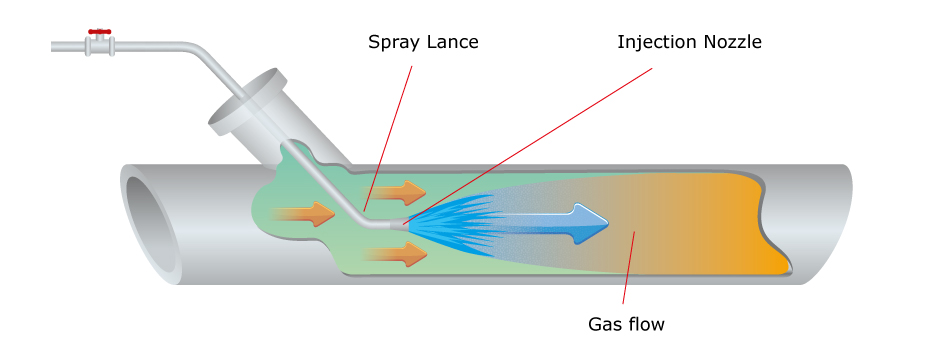Spray pattern and flow rate considerations for spray injection applications
If a fluid is sprayed into another fluid or gas mixing will occur over time naturally. However, the more evenly distributed the spray is and the finer the spray the quicker this mixing will occur. In a moving fluid stream complete mixing may be required by a certain point further downstream. This effectively places a time limit on how and by when the injected fluid needs to be fully disseminated.

Effective nozzle selection can help ensure quick efficient mixing. The angle of the spray pattern may need to be adjusted or the consistency of the spray. Often finer sprays can achieve the necessary mixing and reaction for the smaller volumes of additive.
Low volume spray injection
If only small amounts of an additive need to be injected then the flow rates will need to be kept low. In order to achieve the swift mixing at low flow rates then a finely atomised spray will be required. Generally though fine atomisation requires high pressure and consequently higher flow rates. SNP, however, offer a number of nozzles that will produce fine sprays even at low flow rates. For example the PJ misting impingement nozzle would be suitable for some applications. It is a low flow misting nozzle that also has a low profile making insertion into pipework easier.